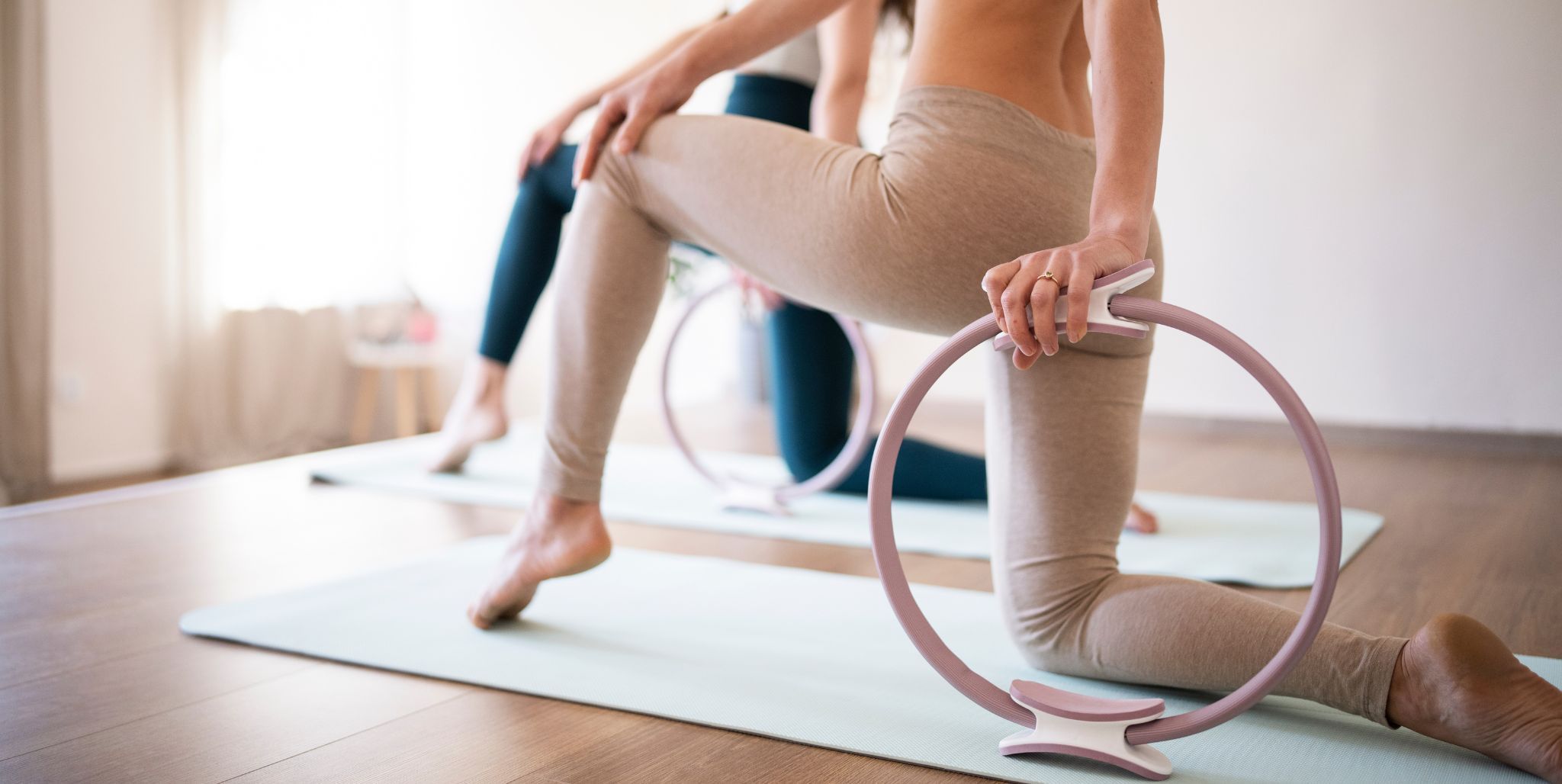A Pilates ring, also known as a magic circle, is a popular tool used in Pilates workouts to enhance strength, flexibility, and balance. However, if you don’t have access to a Pilates ring, don’t worry! There are several alternatives that can provide similar benefits and keep your workouts effective and engaging. Here are some excellent substitutes you can try.
1. Resistance Bands
Resistance bands are a versatile and affordable alternative to a Pilates ring. They can mimic the resistance provided by the ring and are available in different levels of tension. Use them for inner-thigh squeezes, arm presses, or core-strengthening exercises. Resistance bands are lightweight and portable, making them a great option for home workouts or travel.
How to Use:
- Wrap the band around your thighs or arms to create tension.
- Perform exercises like leg presses or chest squeezes to target similar muscle groups as the Pilates ring.
2. Yoga Blocks
Yoga blocks can serve as a substitute for a Pilates ring in certain exercises. They provide stability and resistance, especially when used for squeezing movements. Though they don’t have the elasticity of a ring, their firmness can help engage your muscles effectively.
How to Use:
- Place a yoga block between your thighs or hands and press inward during exercises.
- Use it as a prop for balance and support in various Pilates poses.
3. Small Pilates Ball
A small Pilates or stability ball is another excellent alternative. It’s soft, squeezable, and can replicate some of the squeezing and pressing actions performed with a Pilates ring. Additionally, it’s a fantastic tool for improving core strength and balance.
How to Use:
- Place the ball between your knees, hands, or thighs and perform squeezing exercises.
- Use it under your lower back for support during core work.
4. Cushions or Pillows
For a budget-friendly and readily available option, grab a cushion or a small pillow. While they don’t offer as much resistance, they can still help with alignment and muscle engagement during Pilates exercises.
How to Use:
- Squeeze a cushion between your knees or arms to engage your muscles.
- Use it as support for seated or lying-down exercises.
5. Foam Roller
While primarily used for stretching and myofascial release, a foam roller can also double as a Pilates ring alternative in some exercises. Its cylindrical shape makes it ideal for squeezing or balancing movements.
How to Use:
- Hold the roller between your hands or place it between your legs for resistance.
- Use it as a stability challenge during core exercises.
6. Towel
A rolled-up towel is an easy and cost-effective option for those without a Pilates ring. It’s perfect for squeezing and pressing movements and can also assist with stretching exercises.
How to Use:
- Roll the towel tightly and use it as a prop for inner-thigh squeezes.
- Hold it in your hands and press for arm-strengthening exercises.
7. Medicine Ball
If you have a lightweight medicine ball, it can act as a Pilates ring replacement. It’s particularly useful for resistance exercises targeting the core, arms, and thighs.
How to Use:
- Squeeze the ball between your hands or legs.
- Use it for weighted movements to add an extra challenge.
Tips for Using Alternatives
- Focus on controlled movements to ensure proper muscle engagement.
- Use proper form and alignment to avoid strain or injury.
- Gradually increase the resistance or intensity of your workouts as you progress.
Conclusion
While a Pilates ring is a unique tool, its absence doesn’t mean you can’t achieve an effective workout. Resistance bands, yoga blocks, small balls, and even household items like cushions or towels can serve as excellent substitutes. By being creative and resourceful, you can maintain your Pilates practice and continue reaping its many benefits. Experiment with these alternatives to find what works best for you and your fitness goals.
